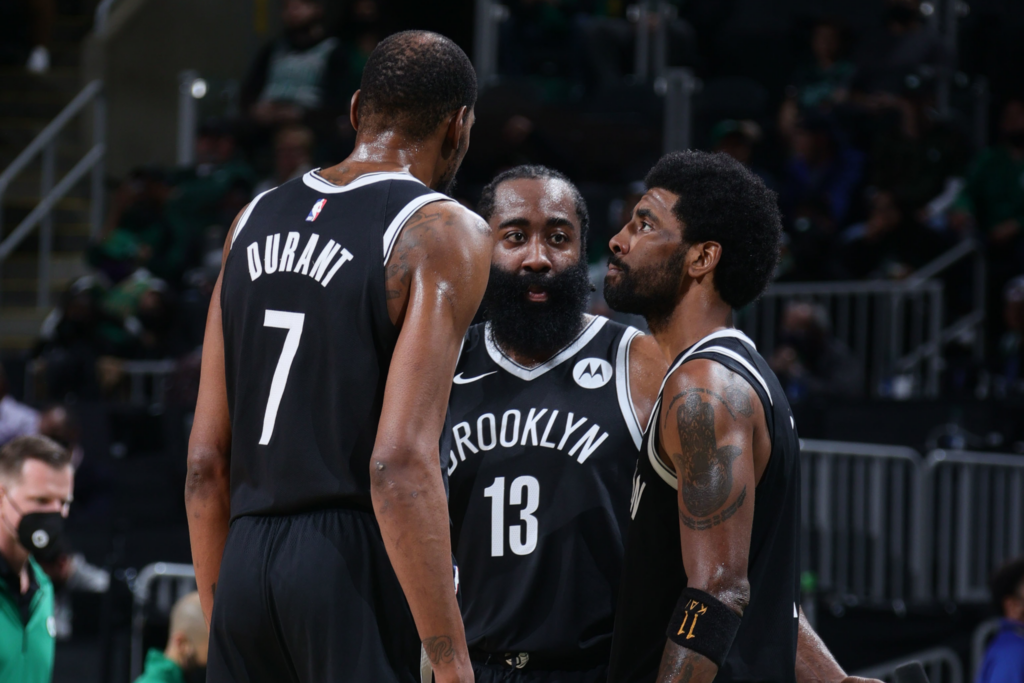The luxury tax money, which is the penalty for illegally exceeding the salary cap, is collected by the NBA and then re-distributed equally among teams that did not pay luxury tax. In the 2021-2022 season, 7 teams paid a combined $481 million in luxury tax payments, while the remaining 23 teams received $10.46 million each from the luxury tax redistribution.

What is the luxury tax and why is it in place?
The luxury tax is related to the total amount of money NBA teams can spend on their player payroll. In order to limit teams from spending however much money they like, the NBA implements a salary cap that provides a limit to the payroll. However, this is a “soft” salary cap, meaning that teams can use exceptions to exceed the salary cap without being penalized.
However, exceeding the salary cap by a set threshold incurs the luxury tax payment. To give an example of the luxury tax threshold, the 2021-2022 NBA season had the salary cap set at $112.414 million, while the luxury tax threshold was set at $136.606 million. Exceeding the luxury tax threshold results in a penalty for every dollar exceeded. The penalties are explained in detail in the table below:
| Luxury tax penalty | |||
| Range above luxury tax threshold | Luxury tax payment (per dollar exceeding luxury tax threshold) | Maximum penalty | Notes |
| $0 to $5,000,000 | $1.50 per dollar | $7.5 million | |
| $5,000,000 to $10,000,000 | $1.75 per dollar | $8.75 million | |
| $10,000,000 to $15,000,000 | $2.50 per dollar | $12.5 million | |
| $15,000,000 to $20,000,000 | $3.25 per dollar | $16.25 million | |
| $20,000,000+ | +$0.50 per dollar per range | Increases per $5 million range |
There are even harsher tax penalties for teams who are deemed as “repeat offenders”: the term refers to teams who have exceeded the luxury tax in at least 3 of the last 4 seasons. The luxury tax penalties for repeat offenders are shown in the table below:
| Luxury tax penalty (repeat offenders) | |||
| Range above luxury tax threshold | Luxury tax payment (per dollar exceeding luxury tax threshold) | Maximum penalty | Notes |
| $0 to $5,000,000 | $2.50 per dollar | $7.5 million | |
| $5,000,000 to $10,000,000 | $2.75 per dollar | $8.75 million | |
| $10,000,000 to $15,000,000 | $3.50 per dollar | $12.5 million | |
| $15,000,000 to $20,000,000 | $4.25 per dollar | $16.25 million | |
| $20,000,000+ | +$0.50 per dollar per range | Increases per $5 million range |
Luxury tax payments are calculated and collected based on the payroll of a team at the end of the regular season. Therefore, it is not uncommon to see teams make moves that can reduce their total payroll and even potentially see them go below the luxury tax threshold.
Has the luxury tax prevented competitive disparity in the NBA?
The luxury tax was introduced to penalize teams for going over the limit and rewarding teams who followed the salary cap rules, and overall reduce any emerging competitive disparity. But how effective has that been? It remains up for debate. In the last 16 seasons, only 4 of the NBA champions were not over the luxury tax. The Golden State Warriors, winners of the 2022 NBA Finals, paid $170.33 million in luxury tax this season.

A few teams have accepted that they need to go over to the luxury tax threshold if they want to make a push for the title, and teams like the Golden State Warriors are willing to pay excessive luxury tax payments in order to sustain their dominance. These teams can easily make back that much in revenue that successful teams get through increased merchandising, broadcasting, and ticketing money, among other revenue streams.
Other, smaller teams don’t have the same luxury, so to speak. Teams like the New Orleans Pelicans and the Charlotte Hornets have never paid luxury tax. 9 teams have paid a cumulative of $100+ million in luxury tax; everyone else has paid less than $60 million each or less. And as mentioned earlier, most NBA champions are paying the luxury tax.
The concept that the NBA applied to protect law-abiding and/or smaller teams is being abused by teams with big ambitions and even bigger pockets. It’s not to say that every luxury tax paying team is successful, nor is paying the luxury tax often risk-free; but the teams at the top are shelling out huge sums, and can be seen in a way paying their way to success. Look no further than the Golden State Warriors, the most successful team in the last decade, who have spent a whopping $337,841,573 in luxury tax payments.
What is the luxury tax outlook for the 2022-2023 NBA season?
The luxury tax threshold is set at $150.267 million for the 2022-23 NBA season.
The luxury tax was introduced as a penalty, but teams now commonly exceed it: in fact, since the luxury tax’s introduction 21 years ago, 28 of the total 30 NBA teams have exceeded the luxury tax threshold for at least one season (the Lakers have exceeded it 11 times). On top of that, teams have readily accepted the luxury tax penalty in exchange for a better chance of success, and has arguably created competitive disparity that the penalty was put in to deter. The NBA may have to evaluate in the near future how to deter teams from paying their way to titles, especially on the behalf of the law-abiding teams.
